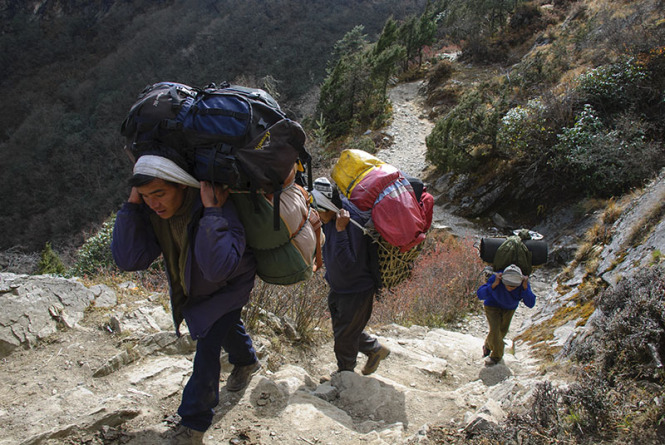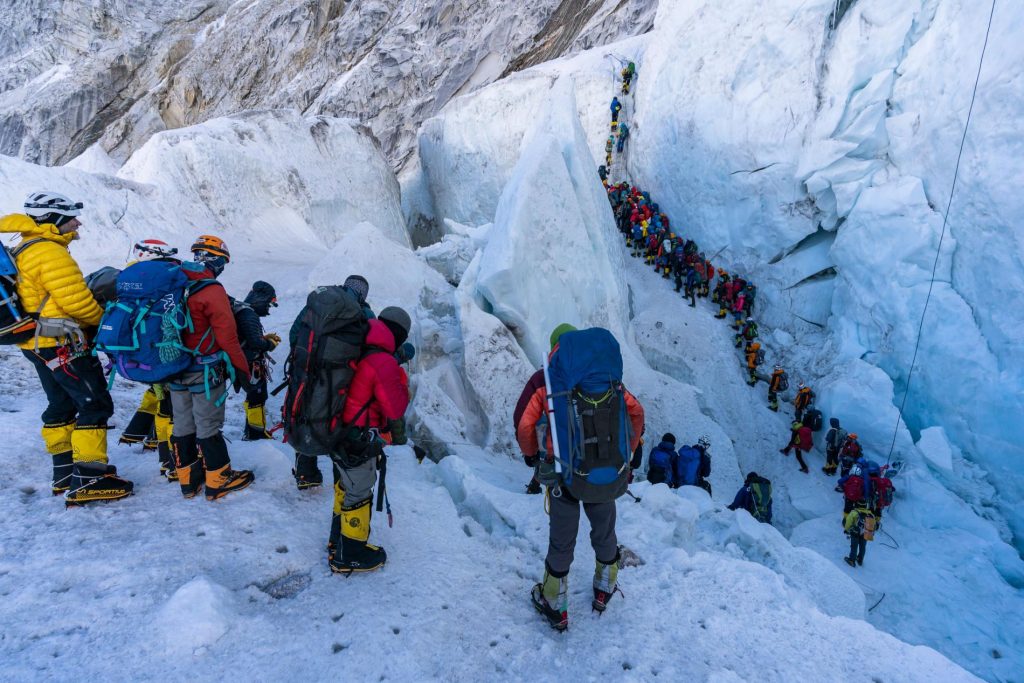In 2019 Mount Everest experienced it’s busiest season of climbers ever. Over 3000 adventurous holiday makers descended onto Mount Everest creating human traffic jams, dropping litter and participating in the employee malpractices Sherpa’s are exposed to everyday.
Climbers stood in lines up to the main summit, pushing and shoving for selfies while passing multiple dead bodies, this is now the stark reality on Everest.
A total of 295 people have died on both sides of the the mountain since 1924.”
Since 1924 there have been a total of 295 climbers who have died on both sides of the mountain. After Nepal and China stepped in during 2019 there are now only 100 bodies left.
Removing the bodies is incredibly difficult as it requires a lot of man power and can be very treacherous on the mountain. Alongside this, bodies become frozen to the mountainside over time, making them even harder to move.
Although many climbers in the community would prefer to have their body left on the mountain, many family members seek closure and the local Sherpa community consider leaving the dead on Everest disrespectful to the mountain gods.
Years of social media exposure and personal bucket lists have led to this point where the mountain is packed with climbers pushing past each other to the top.
To make the situation even worse the Nepal Tourism Department collected over 11 tonnes of rubbish off of the mountain in 2019 alone.
Now being described as “The world’s highest rubbish dump”, it is littered with oxygen tanks, tents, sleeping bags and even human waste.
Some climbers carry disposable travel toilet bags to use in the higher camps, while at Base Camp, there are toilet tents which have special drums where human waste goes. These can be taken away from the mountain and emptied safely.
To stop this behaviour, The Nepalese government have begun discussing plans to scan, tag and trace climbers’ belongings.
All climbers would have to pay a deposit of $4,000 (£3,100) before they begin their expedition up the the mountain and might not get their money back if they return without their items.

Due to travel becoming ever increasingly easier around the world, hundreds of thousands of people are trying their hardest to complete their bucket list. Causing hours worth of human traffic along the mountainside.
The UN placed Nepal at 145 out of 187 of the worlds poorest countries in its last human development report. This highlights the stark reality that Nepal is having to spend more money on clearing Everest than looking after it’s citizens.
This has become increasingly worse with the rise of social media platforms such as Instagram and Twitter, where people share their other worldly adventures.
With social media influencer’s sharing their adventures around the world and endorsing travel guide companies, we are keen to follow suit.
#MountEverest has racked up 150,540 thousand hashtags in during Instagram’s life span. This interaction with social media is having a detrimental effect on Mount Everest and the local Guides due to mass amounts of people wanting to take on the hike.
Although this popularity may look like a tourism industry success from the outside, it has had a profound effect on the life of local people who live in Nepal.
As shown in The Porter: The untold story at Everest by Nathaniel J. Menninger the effects of this increase in tourism is incredibly negative. You can watch his documentary where he lives like a porter for an entire expedition for free on Vimeo.
Sherpa’s from all over Nepal are hired on a expedition to expedition basis as guides, being paid the tiny some of $15 a day while carrying over 100lbs on their backs. Also known as Porters, these workers carry equipment and food up the mountain for the customer.

Porter’s carry minimal personal belongings to make room for customer’s requirements and risk their lives by climbing the mountain on a regular basis.
By continuing to flock to beautiful world hot spots and taking them for granted we are not only mistreating our planet, but mistreating human beings.
What can we do about it?
- Rethink your bucket list – Do your bit for the environment and maybe admire it from a distance instead?
- If you do decide to undertake a mission such as Mount Everest, do your best to be as Eco friendly as possible, use an ethical guide company and tip your guide well.
It’s inevitable that eventually drastic action will need to be taken to protect Mount Everest in all it’s glory. But, if you must head up the mountain, please show it some respect and be safe!
